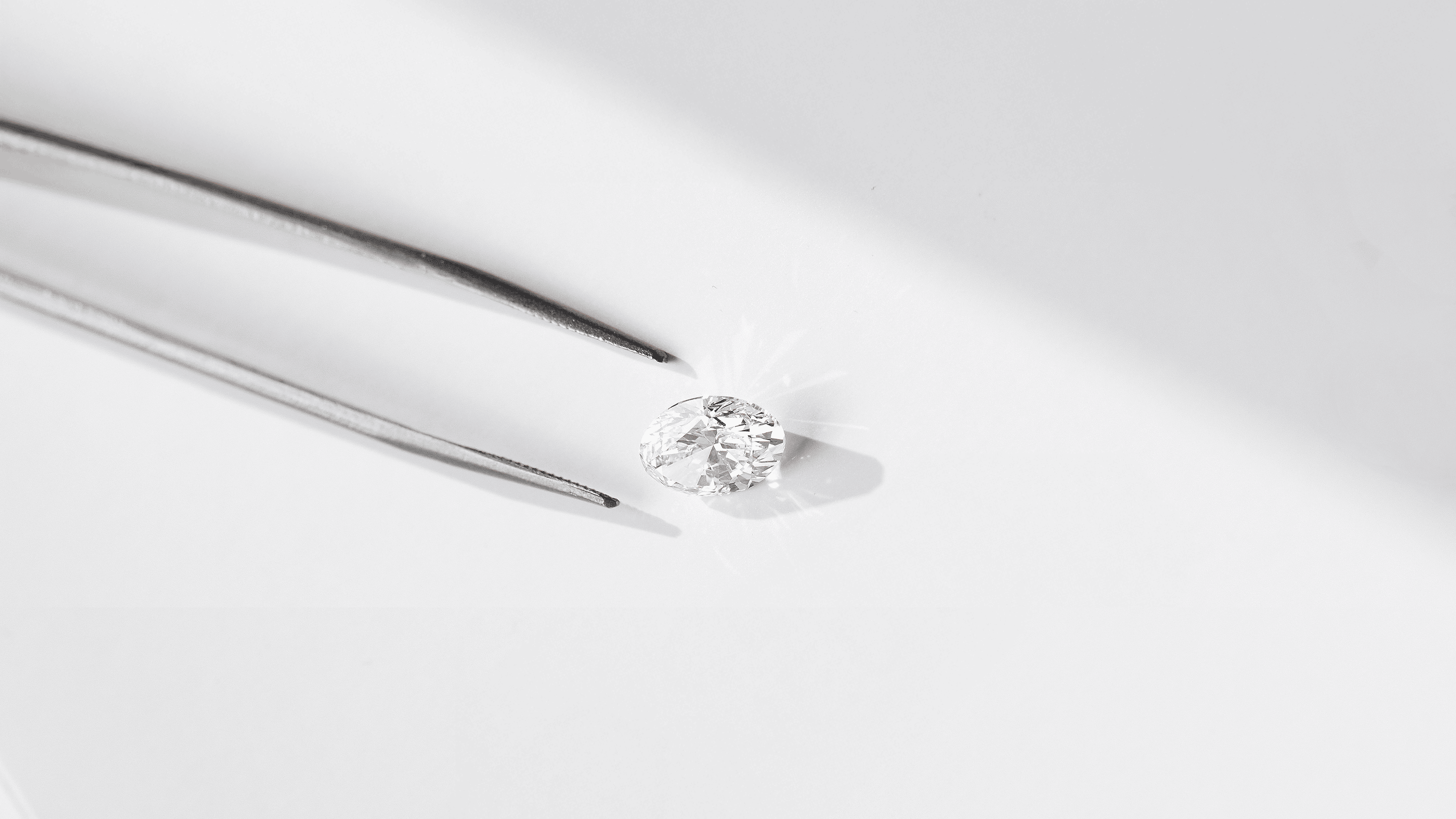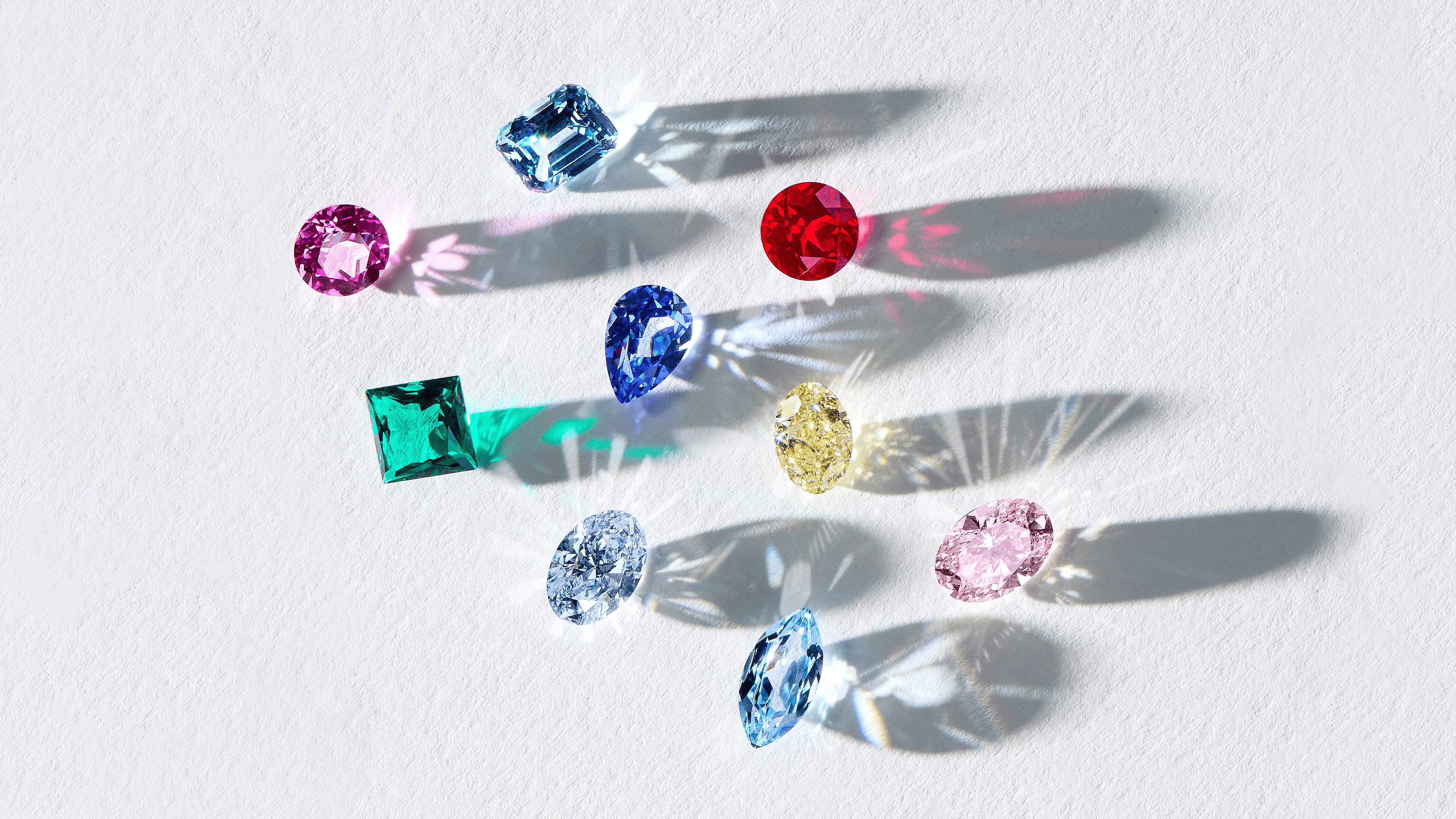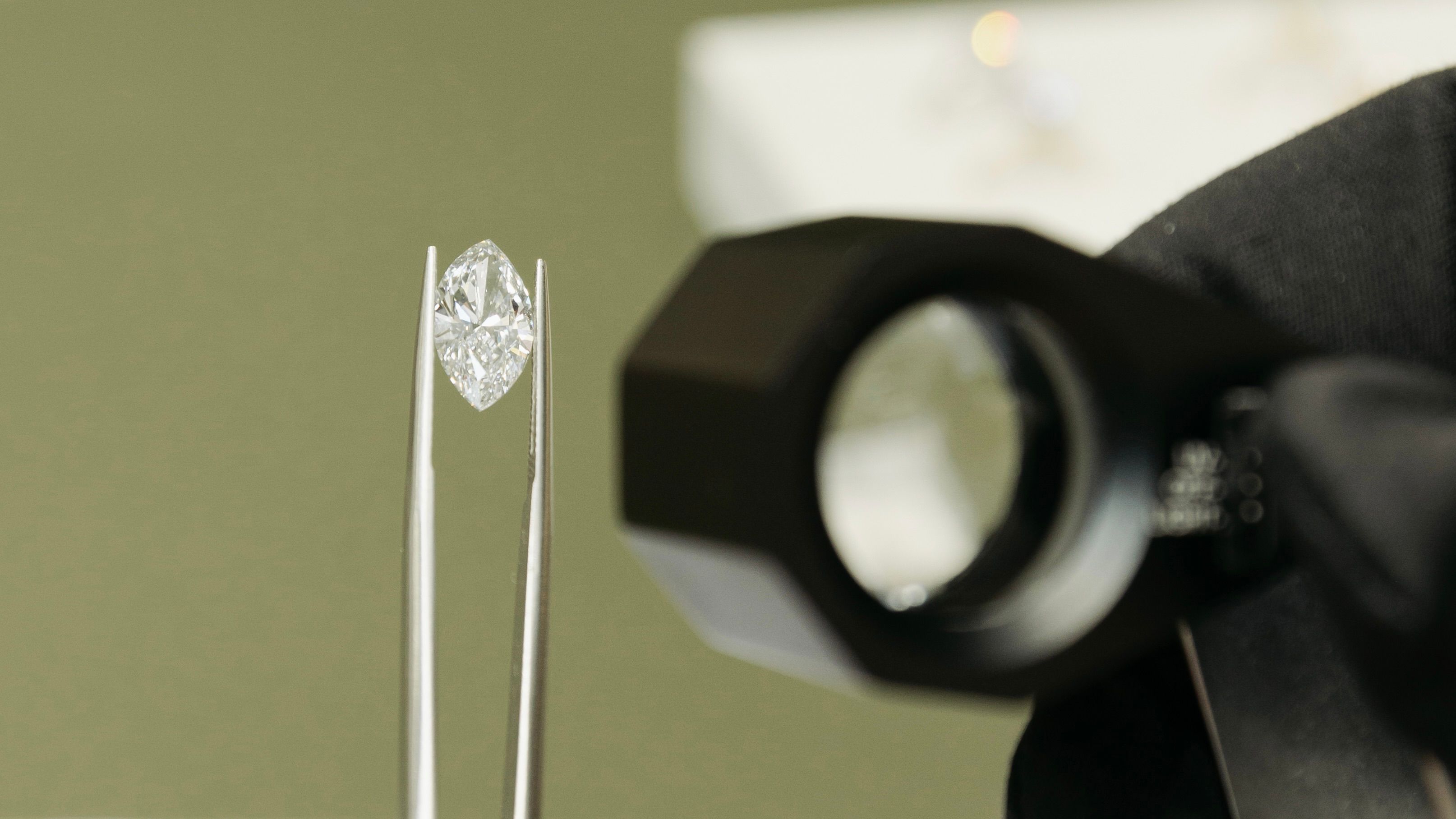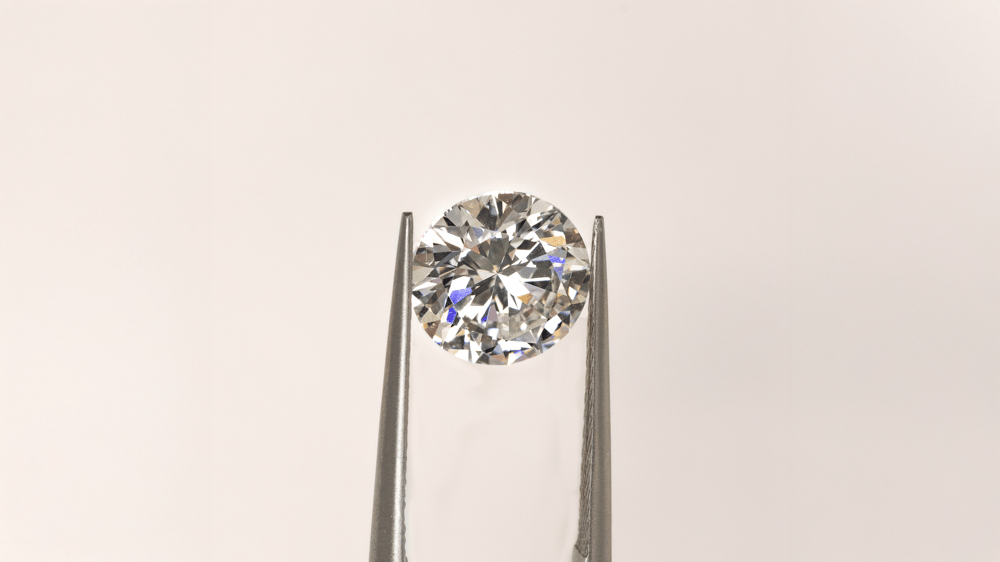
What is Diamond Clarity?
The clarity of diamonds refers to the presence or absence of inclusions in a diamond, and blemishes on a diamond. It’s also another one of the 4Cs which determines the price of a diamond, along with the colour, cut and carat weight. Inclusions are imperfections which are present in a mined diamond, as a result of the natural process of a diamond growing on the earth. As with any naturally occurring material, these are not uniform, and so the diamond industry needed to come up with a way to label and price diamonds.
Many of these inclusions are not visible to a normal person, and so diamonds called “eye clean” are diamonds which have imperfections, but aren’t visible to the naked eye. Clarity isn’t only a vanity consideration - whilst a heavily included diamond may not shine as brightly as a higher clarity diamond, it may also be of lower quality, and more likely to chip if the wearer has an active lifestyle.
Diamond Clarity Chart
The Diamond Clarity Scale was developed by the Gemological Institute of America (GIA) and rates a diamond from “flawless" to “included”. This cannot be done with the naked eye, and professionals use 10x magnifiers to see the internal and external state of the diamond.
A “Flawless” [FL] diamond has no inclusions or blemishes visible under 10x magnification. Mined diamonds are all likely to have some kind of inclusion after being formed by a natural process, so finding “flawless” diamonds is extremely rare, making these the most expensive clarity of diamond.
“Internally Flawless” [IF] diamonds have no inclusions [internal imperfections] visible under 10x magnification but may have some blemishes [external imperfections] under magnification. These diamonds are “eye clean” and so these are still a great option to include as a centre stone on an engagement ring.
“Very, Very Slightly Included” [VVS1 and VVS2] diamonds are exactly that. When a diamond grader can see that there are some levels of inclusions at 10x magnification, but can barely make them out - a diamond will be given this grade. These are also “eye clean” diamonds, proving that sometimes it doesn’t make sense to go for the highest grade diamond if it’s a stretch to afford it, as you can generally get the same look for less.
“Very Slightly Included” [VS1 and VS2] diamonds have slightly more visible inclusions under magnification, but still minor, and are mostly still “eye clean”. “Slightly Included’ [SI1 and SI2] diamonds have inclusions which are more noticeable under 10x magnification, and “Included” [I1, I2, and I3] diamonds have more obvious inclusions under 10x magnification. The latter may affect the quality and durability of the stones, and so these are diamonds which would be unsuitable for an engagement ring that the wearer is likely to wear daily, and who has a rigorous active daily lifestyle such as going to the gym or gardening.
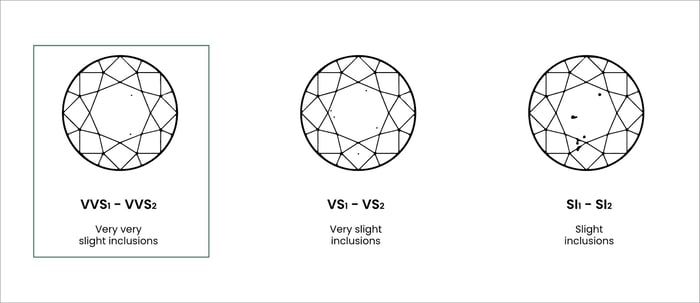
Choosing a Clarity Grade
When it comes to the 4Cs it can become overwhelming to understand what suits your budget and lifestyle, what would involve a compromise and what wouldn’t. If you have an unlimited budget, go for a D [colourless] and FL [flawless] diamond - it would be the rarest diamond colour and clarity combination, and could be a great investment. It’s important to note that some diamond cuts are more forgiving to inclusions than others. Facets are the flat surfaces which are arranged in a geometrical pattern – and the more facets, the less visible any inclusions will be. So for this reason, depending on the cut you’re looking for, you might not need to be as caught up on the clarity. Emerald cuts have fewer facets and a glassy look, whilst radiant cuts have significantly more facets and so are more forgiving to a lower clarity.
If you have a budget in mind, when it comes to clarity the only thing to focus on is whether the diamond is “eye clean,” like a VS1 diamond which is technically included, but not to the naked eye. So unless you’re going to be looking at your diamonds through a magnifier daily, it means you can get a bigger ring for your budget, whilst not compromising on the sparkle or durability.
If your budget still can’t get you the size you’re looking for here, a lab diamond could be a great option as these are generally D Flawless due to being grown in controlled settings which emulate the natural process of a diamond being grown, without any external factors which may damage the stone.
When it comes to choosing the best diamond for you– look at the bigger picture. What size matters to you, what cut do you want? More complex cuts like an emerald shape, or a heart shape require a skilled hand, and a durable stone, and so a higher clarity diamond would mitigate the risk of cracking. It’s also important to see the stone in person where possible, whether in reality or via video call, so you can understand how it sparkles, and whether it’s what you envision for a piece of jewellery that [hopefully] you’ll wear daily. If you’d like a virtual consultation, book an appointment with us here .
